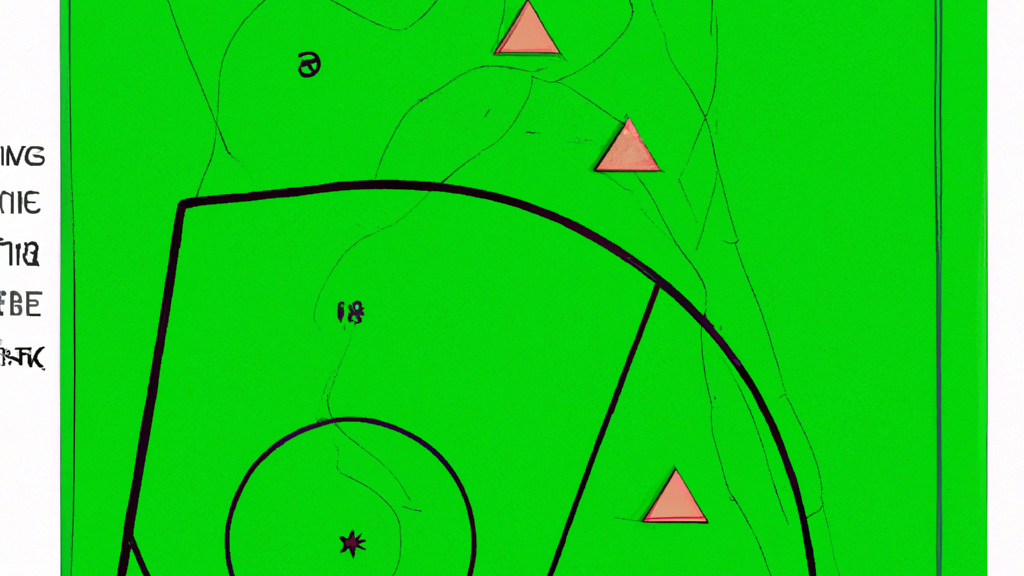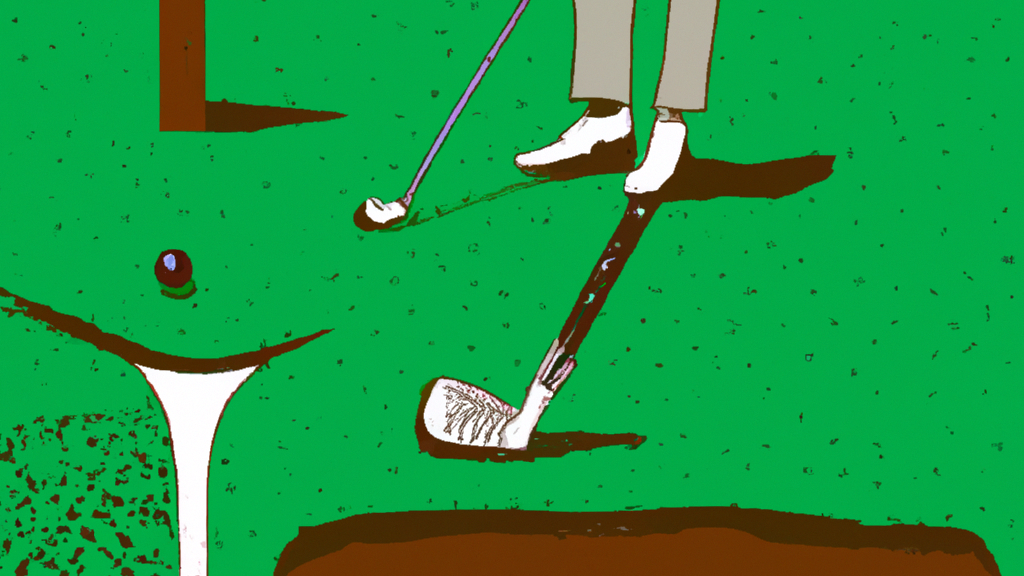GOLF COURSE MANAGEMENT: A GUIDE TO SEEDING AND OVER-SEEDING
Golf course management is a crucial aspect of maintaining a beautiful and playable golf course. One of the most important tasks in golf course management is seeding and over-seeding. Whether you are a golf course superintendent, a golf course owner, or a golfer, understanding the basics of seeding and over-seeding is essential for the health and longevity of the course. In this guide, we will explore the benefits of seeding and over-seeding, the best times to seed and over-seed, and the different types of grasses that are commonly used on golf courses.
By the end of this article, you will have a comprehensive understanding of how to properly seed and over-seed your golf course, ensuring that it remains in top condition for years to come. So, let’s dive in and explore the world of golf course management!

GOLF COURSE MANAGEMENT: A GUIDE TO SEEDING AND OVER-SEEDING
Golf courses are a beautiful and serene place to spend a day, but they require a lot of maintenance to keep them looking their best. One of the most important aspects of golf course management is seeding and over-seeding. This process ensures that the course stays lush and green, even in the face of heavy foot traffic and harsh weather conditions. In this guide, we’ll take a closer look at the ins and outs of seeding and over-seeding, and how it can benefit your golf course.
What is Seeding?
Seeding is the process of planting grass seed in areas where the turf has become thin or damaged. This can happen for a variety of reasons, including heavy foot traffic, disease, or weather conditions. Seeding is an important part of golf course maintenance because it helps to maintain the overall health and appearance of the turf.
When to Seed
The best time to seed your golf course depends on the type of grass you have and the climate in your area.
In general, the best time to seed is during the cooler months of the year, when the soil is moist and temperatures are mild. This allows the grass seed to germinate and establish itself before the hot summer months arrive.
Types of Grass Seed
There are many different types of grass seed available, each with its own unique characteristics. Some of the most common types of grass seed used on golf courses include:
- Bentgrass: Bentgrass is a fine-bladed grass that is commonly used on golf greens. It is known for its ability to tolerate low mowing heights and its ability to recover quickly from damage.
- Bermuda Grass: Bermuda grass is a warm-season grass that is commonly used on golf courses in southern regions. It is known for its ability to tolerate heat and drought, making it a popular choice for courses in hot, dry climates.
- Ryegrass: Ryegrass is a cool-season grass that is commonly used for over-seeding in the fall. It germinates quickly and provides a lush, green turf during the winter months.
- Fescue: Fescue is a cool-season grass that is commonly used on golf courses in cooler regions. It is known for its ability to tolerate shade and its deep root system, which helps it to withstand drought conditions.
Choosing the right type of grass seed for your golf course depends on a variety of factors, including your climate, soil type, and the amount of foot traffic your course receives.
Preparing the Soil
Before you can seed your golf course, you need to prepare the soil. This involves removing any debris, such as rocks or sticks, and tilling the soil to a depth of at least six inches. You should also test the soil to determine its pH level and nutrient content. This will help you to determine if you need to add any amendments, such as lime or fertilizer, to the soil before seeding.
Seeding Techniques
There are several different techniques that can be used to seed a golf course, including broadcast seeding, drill seeding, and hydroseeding.
- Broadcast Seeding: Broadcast seeding involves spreading the grass seed evenly over the surface of the soil. This can be done by hand or with a mechanical seeder. Broadcast seeding is a quick and easy way to seed a large area, but it can be difficult to ensure that the seed is distributed evenly.
- Drill Seeding: Drill seeding involves using a machine to plant the grass seed directly into the soil. This ensures that the seed is planted at the correct depth and spacing, which can help to improve germination rates.
- Hydroseeding: Hydroseeding involves mixing the grass seed with water and a binding agent, such as mulch or fertilizer, and spraying the mixture onto the soil. This technique can be used to seed large areas quickly and efficiently, but it can be more expensive than other seeding techniques.
Over-Seeding
Over-seeding is the process of planting grass seed over an existing turf to improve its density and appearance. This is typically done in the fall, when the existing turf is starting to go dormant. Over-seeding can help to fill in thin or bare areas of the turf, and it can also help to introduce new grass varieties to the course.
Benefits of Seeding and Over-Seeding
Seeding and over-seeding are important parts of golf course management because they help to maintain the overall health and appearance of the turf. Some of the benefits of seeding and over-seeding include:
- Improved Turf Density: Seeding and over-seeding can help to fill in thin or bare areas of the turf, which can improve its overall density and appearance.
- Enhanced Disease Resistance: A healthy, dense turf is better able to resist disease and pest infestations.
- Improved Playability: A lush, green turf provides a better playing surface for golfers, which can improve their overall experience on the course.
- Increased Property Value: A well-maintained golf course with a lush, green turf is more attractive to potential buyers, which can increase its overall property value.
Conclusion
Seeding and over-seeding are important parts of golf course management that can help to maintain the overall health and appearance of the turf. By choosing the right type of grass seed, preparing the soil properly, and using the right seeding techniques, you can ensure that your golf course stays lush and green, even in the face of heavy foot traffic and harsh weather conditions. Whether you’re a golf course owner, manager, or superintendent, seeding and over-seeding should be an important part of your overall maintenance plan.

- A guide to overseeding: What, where and why
Oct 4, 2021 … Golf course overseeding: What you need to know … The maintenance staff sprays out chemicals to slow the growth of the Bermuda grass during … - Improve your turf with overseeding
Grass mixtures for professional overseeding. For an annual maintenance overseeding, try sowing the same seed mixture used for establishment if it contains a … - Lawn Management through the Seasons
Aug 1, 2022 … Seeding. Late summer to early fall usually is the best time to establish a new lawn from seed. · Overseeding. Overseeding into thin turf or small … - ‘Special effects’ – Golf Course Industry
As courses engage in Fall prep, overseeding offers some key advantages when … turf in the aftermath of a long, hot summer, says PBI-Gordon product manager … - Carolina Lawns: A Guide to Maintaining Quality Turf in the Landscape
For seeded lawns: Fertilize the new seedlings approximately six to eight weeks after emergence. For more specific maintenance information on your grass type, … - Northern Utah Turfgrass Management Calendar | USU
The warmth of the soil in late summer is more advantageous for seed germination than the wet and cool soil conditions of the spring, allowing for faster … - The Links Golf Course | Sandestin Golf and Beach Resort
The Links Golf Club Rates ; August 8 – 22, 2023 (Aeration Period), $55, $55 ; August 23 – November 6, 2023, $109, $91 ; November 7 – 13, 2023, Over-Seeding Greens … - Overseeding With Ryegrass | Home & Garden Information Center
Sep 5, 2019 … Remove any excess thatch so the seed can make good contact with the soil. A heavily thatched lawn tends to result in irregular patches of … - A Guide for Greens Committee Members (2015)
Recommend that the main- tenance calendar be set prior to, and with priority over, the tournament calendar. This allows major golf course maintenance, such as … - A Guide to Establishing Seeded Zoysiagrass in the Transition Zone
Oct 4, 2006 … Seeded zoysiagrass has tremendous potential for golf courses use … occurred in a perennial ryegrass sward after two years, and over 73% …
Stuff about Golf Course Management: A Guide to Seeding and Over-Seeding you didn’t know
- The first recorded game of golf was played in Scotland in the 15th century.
- Golf balls were originally made out of wood until the mid-1800s when they began to be made out of rubber.
- The Masters Tournament, one of professional golf’s four major championships, has been held annually at Augusta National Golf Club since 1934.
- In 1971, Lee Trevino became the first player to win all three majors (the U.S Open, British Open and PGA Championship) contested that year.
- Tiger Woods is widely considered one of the greatest golfers ever and holds numerous records including being tied for most PGA Tour wins with Sam Snead at 82 victories each.
- Caddies have been a part of golfing culture since its inception but were not allowed on courses during tournaments until as recently as the early 1980s





